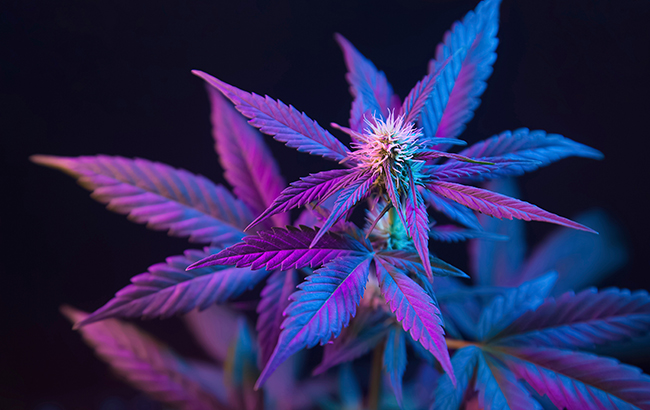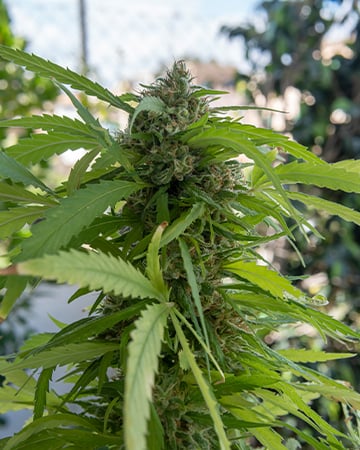If you’ve ever scrolled through seed catalogs wondering which cultivars are truly 100 percent indica, you’re not alone. Most modern cannabis is hybridized, meaning it carries both indica and sativa genetics. But a few classic cultivars still hold their pure indica roots.
These landrace varieties come from mountain regions in Afghanistan, Pakistan, and India, where they evolved to handle harsh, cold climates. Pure indicas are known for their short, sturdy structure, fast flowering time, and thick, resin-coated buds. Finding a true 100 percent indica today takes some digging, but a few famous names still carry that pure lineage.

What Does 100% Indica Mean
A 100 percent indica strain is one that comes entirely from indica genetics with no sativa influence. These are known as landrace cultivars, meaning they developed naturally in specific regions without human crossbreeding. Most come from the Hindu Kush mountain range, where the cold, dry climate shaped plants that grow short, dense, and covered in resin.
Pure indicas differ from hybrids because they haven’t been mixed with sativa plants for flavor, yield, or height. They stay true to their natural structure with broad leaves, compact growth, and fast flowering. While most modern cultivars are hybrids, a handful of original indicas still carry these unmixed genetics, giving growers a look at cannabis in its purest form.
Examples of 100% Indica Strains
Pure indicas are rare these days, but a few well-known cultivars still hold strong genetic links to their original landrace roots. These are the classics that helped shape modern cannabis breeding.

Afghani Kush
Originating from the Hindu Kush mountains along the Afghanistan-Pakistan border, this cultivar is a textbook example of a pure indica. It grows short and bushy, with thick resin production and a deep, earthy aroma.
Hindu Kush
One of the oldest known pure indicas. It adapted to high-altitude conditions, making it resilient and naturally pest-resistant. The buds are dense, sticky, and covered in trichomes.
Mazar
A descendant of Afghan genetics known for stability and heavy resin content. Its buds are chunky, crystal-coated, and rich in that signature hash-like scent.
Northern Lights

While some versions today are slightly hybridized, the original Northern Lights #1 line was a pure indica from Afghan origins. It remains one of the most stable and consistent cultivars for indoor growers.
Each of these cultivars reflects the natural evolution of indica genetics before hybrid breeding became the norm, giving growers a chance to cultivate cannabis that’s as close to the original as it gets.
Common Traits of 100% Indica Strains
Pure indica cultivars share a set of traits that make them easy to spot, whether you’re growing or buying them. These plants evolved in colder, high-altitude regions, so they’re built to be sturdy and efficient.
Plant Size: Indicas stay short and stocky, usually growing between 2 and 4 feet tall. Their compact build makes them great for indoor grows or small outdoor spaces.
Leaves: The leaves are broad, thick, and deep green. They help the plant absorb more light in cooler environments.
Flowering Time: Indicas bloom fast, often finishing within 7 to 9 weeks. This quick turnaround is one reason growers love them.
Bud Structure: The buds are dense, heavy, and sticky with resin. They form tight clusters instead of the airy formations common in sativas.
Aroma: Indicas often carry earthy, woody, or musky scents, thanks to terpenes like myrcene and humulene.
Every pure indica cultivar may vary a little, but they all share these same foundational traits that make them distinct from their taller, slower-growing sativa relatives.
Are There Any True 100% Indicas Left Today
Finding a completely pure indica today is rare. After decades of crossbreeding, most cultivars sold as “indica” are hybrids that lean heavily toward indica genetics but still carry a touch of sativa influence. Breeders often mix genetics to improve yield, flavor, or resistance, which slowly blends the once-distinct lines.
That said, a few landrace indicas have remained largely untouched. Cultivars like Afghan Kush, Hindu Kush, and Lebanese are still considered genetically pure because they were stabilized in isolated regions long before modern hybridization. Some seed banks continue preserving these original genetics to keep them available for future growers.
When you see “pure indica” on a seed listing, it usually means the cultivar is between 90 and 100 percent indica. While true landrace strains are harder to find, they’re still out there for growers who want a piece of cannabis history.
FAQs
What makes a strain 100% indica?
A strain is considered 100 percent indica when it comes from pure landrace genetics with no sativa lineage. These cultivars evolved naturally in mountain regions like Afghanistan, Pakistan, and India.
What makes a strain 100% indica?
A strain is considered 100 percent indica when it comes from pure landrace genetics with no sativa lineage. These cultivars evolved naturally in mountain regions like Afghanistan, Pakistan, and India.
Are there any true 100% indicas left?
Yes, but they’re rare. Classic landrace cultivars such as Afghan Kush, Hindu Kush, and Lebanese remain some of the few strains with pure indica genetics.
How can I tell if a strain is pure indica?
Pure indicas grow short and bushy with broad leaves, dense buds, and a short flowering time. They often have earthy or musky scents and heavy resin production.
What are some examples of 100% indica strains?
Afghan Kush, Hindu Kush, Mazar, Pakistan Valley, Lebanese, Maple Leaf Indica, and the original Northern Lights are all known for being true indicas or extremely close.
Why are most indicas today hybrids?
Years of breeding for better yield, flavor, and THC levels introduced sativa traits into most cultivars, creating indica-dominant hybrids instead of pure indicas.








